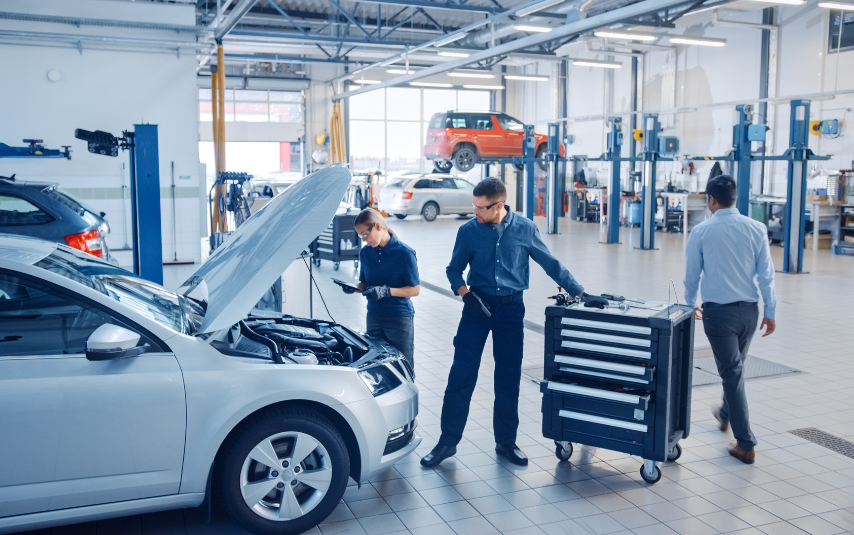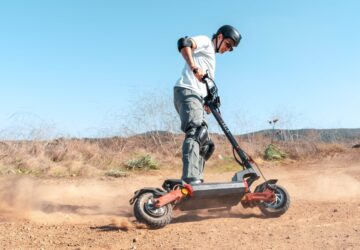Tires are one of the most crucial elements of your car that impact handling, braking, cornering, and safety.
Most drivers across the U.S. are unaware of tire safety and how to take proper care of them to ensure they run for an extended period.
A range of myths swirls around tire maintenance and safety. Debunking these misconceptions and getting your facts straight is essential as it can risk lives or make you visit an auto repair shop repeatedly.
If you believe that tire safety is about ensuring your tires are not worn out, then you are wrong. Let’s look at some of the most common misconceptions about tire safety.
1) New Tires Should Go on the Front
This myth comes from the idea that putting new tires on the front improves the steering and control of the vehicle.
However, the placement of new tires merely depends on the type of vehicle you are driving and the driver’s specific needs.
If you are driving a front-wheel drive vehicle, then putting new tires on the front will improve traction and cornering.
This is the opposite for cars with rear-wheel drive. For such vehicles, putting new tires on the front results in poorer traction during braking, which can be worse on slippery roads.
Whereas if you are driving an All-Wheel Drive, then it’s recommended to change all four tires simultaneously. This is to ensure that all tires have the tread depth, which provides maximum stability.
2) You Can Rely On Tire Pressure Monitoring System
Most modern cars come with a Tire Pressure Monitoring System (TPMS), which is a valuable safety feature.
There are two types of TPMS: Indirect TPMS and Direct TPMS.
An Indirect TPMS relies on wheel speed sensors that anti-lock brake systems use. They measure the revolution rate each wheel is making.
Based on the rate of revolutions, the computer interprets the size of the tire. When a wheel spins faster than usual, the computer calculates that the tire is less inflated.
The Direct TPMS uses pressure monitoring sensors that monitor the specific pressure levels without the need to get information from revolution data.
It works efficiently to alert the driver when tire pressure drops below a specific limit. However, it doesn’t provide real-time data on slight pressure fluctuations.
TPMS will only alert the driver when the pressure becomes below the set limit, which can be a safety concern.
Both of these sensors don’t tell about tread depth or the age of the tire, which are crucial for ensuring safe handling.
3) Deep Treads Translates to a Good Tire
Adequate tread depth is an indicator that the tires are in good condition, but it’s not enough to rely solely on it.
The rubber quality of the treads and the tread pattern also determine the health of tires.
Good quality cars use advanced rubber compounds that enhance grip, handling, and durability.
Cheaper quality tires have deeper treads, but they use inferior rubber that results in reduced traction and a short life span.
Tires deteriorate with age regardless of their tread depth. If a tire is made with low-quality rubber, it can age and harden after some time, causing the tires to be less flexible and reduce their grip.
4) The same Tires can be Used for All Seasons.
Most people think that the all-season tires can be used any time of the year. They are designed to provide optimal performance during all seasons, but they are not universally suitable for all weather conditions.
All-season tires won’t be beneficial at a place where there is heavy snowfall. For such areas, heavy-duty tires with deep treads are used. They provide an increased level of grip and traction, which makes them suitable for driving in the snow.
Similarly, if you live in an area with scorching heat, the all-season tires will be more prone to wear, and their performance will be significantly impacted.
Safety is a primary concern when using all-season tires in severe cold or hot weather conditions. They can’t provide responsive handling for summer tires or the precise traction needed for winter tires.
It’s better to have a pair of all-season tires for use when the weather is not intense and to use dedicated tires for snowy or hot conditions.
Wheel Alignment Doesn’t Guarantee Tire Longevity
Wheel balancing and wheel alignment are crucial for ensuring that the tire’s life span is increased.
Proper wheel alignment ensures that your tires wear evenly. When all four tires consistently contact the road surface, the even distribution of wear across the tire’s tread promotes longer tire life.
Alignment includes adjusting the camber. It’s the angle at which the tire runs on the road. If the alignment is proper, then the wear on the outer and inner surfaces of tires is reduced.








